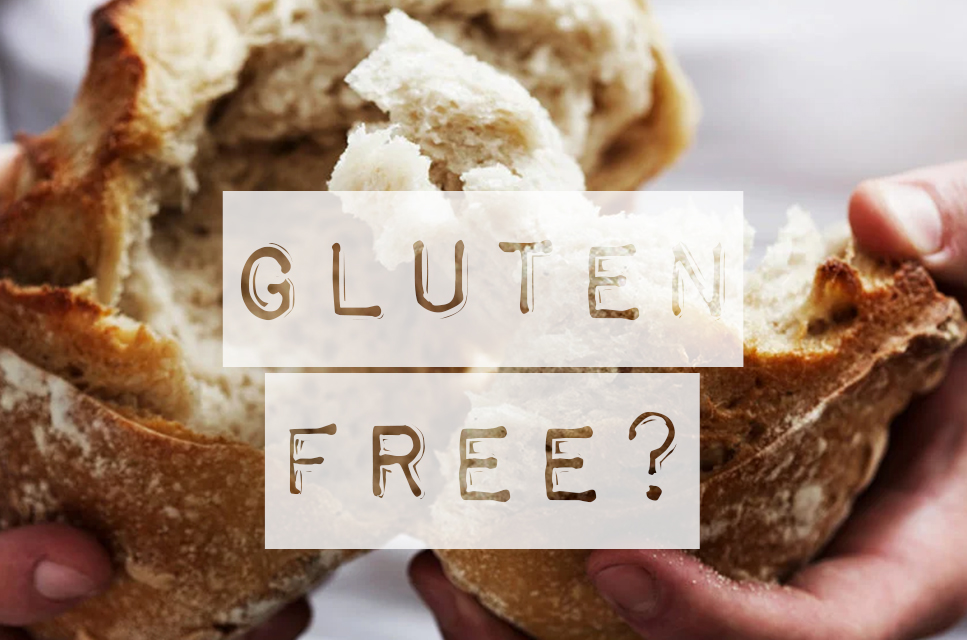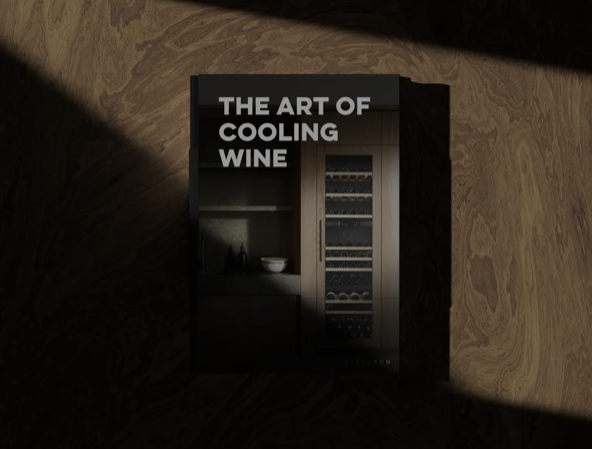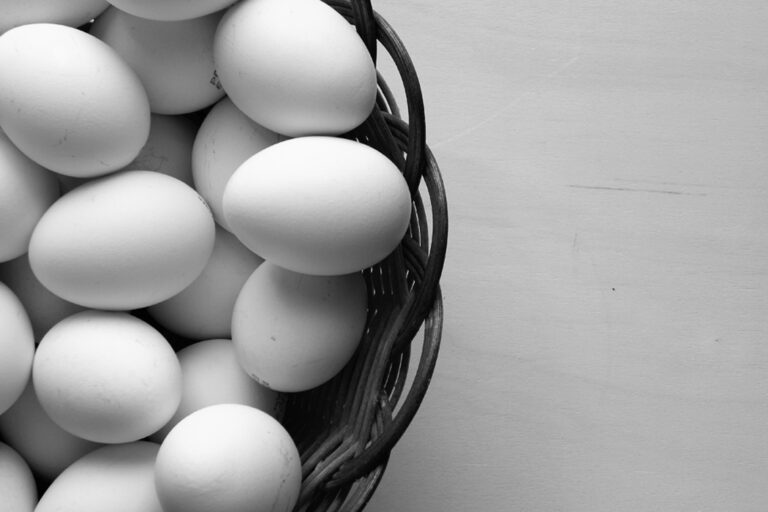Gluten is a group of proteins found primarily in wheat, barley, and rye. If you have celiac disease, gluten intolerance, or gluten sensitivity, consuming gluten can lead to various symptoms and intestinal damage. Consequently, knowing which beverages contain gluten is essential for maintaining your health. [read the full champagne story]
Estimated reading time: 13 minutes

Understanding Gluten and Its Relationship with Beverages
Beverages you may initially think are gluten-free could include hidden sources of gluten due to their ingredients or manufacturing process. For those with celiac disease, even a tiny amount of gluten can be harmful.
Understanding Labels:
- Gluten-Free: Guarantees the product contains less than 20 parts per million of gluten.
- No Gluten Ingredients: The product doesn’t have gluten ingredients but might not meet strict gluten-free criteria due to potential cross-contamination.
Here’s what you should consider with beverages:
- Naturally Gluten-Free Beverages: These include pure fruit juices, coffee, tea, and some alcoholic beverages like wine. Always confirm there are no added ingredients with gluten.
- Alcoholic Beverages: Certain alcoholic drinks, like beers, ales, and lagers that use barley, wheat, or rye, naturally contain gluten. However, there are gluten-free beer options made with alternate grains.
- Distilled Spirits: Although distilled spirits are made from gluten grains, the distillation process theoretically removes gluten proteins. Still, reactions can occur, so seek out spirits labeled as gluten-free.
- Pre-Made Mixes and Coolers: These can contain malt or additives with gluten, so they need thorough investigation.
In short, if you’re avoiding gluten, you must scrutinize beverage labels and consider potential cross-contamination with gluten-containing ingredients to ensure your drink is safe to consume.
The Basics of Champagne
Champagne, your celebratory sparkling wine, has a rich heritage tied to the region it’s named after in France. This section outlines its origins and what grapes give it the distinct taste and effervescence you enjoy.
Origins and Definition
Champagne exclusively refers to the sparkling wine produced in the Champagne region of France. This is due to the specific geoclimatic conditions and traditional methods known as “méthode champenoise”. Only when these criteria are met can a sparkling wine be legally labeled as champagne.
Varieties of Champagne Grapes
Three primary types of grapes contribute to the flavor profiles of champagne:
- Chardonnay: A green-skinned grape variety that adds finesse, and lightness to the blend, and often imparts floral and citrus notes.
- Pinot Noir: This red grape brings body, structure, and complexity, along with flavors ranging from red berries to gamey notes.
- Pinot Meunier: It provides the blend with fruitiness, freshness, and approachability.
Understanding these grapes and the unique Champagne production processes gives you insight into why this sparkling wine is so special.
Ingredients in Champagne Production
Champagne production employs specific ingredients that undergo a meticulous fermentation process. Understanding the role of sugar and the importance of yeast in fermentation will shed light on how these ingredients contribute to the distinctive qualities of Champagne.
Role of Sugar in Champagne
Sugar is a critical ingredient in Champagne production. Initially, you might find naturally occurring sugars in the grape juice, which are essential for fermentation. During the process called tirage, winemakers add a mixture known as liqueur de tirage, which contains extra sugar and yeast. This additional sugar is crucial for the secondary fermentation in the bottle, producing the carbonation that Champagne is famous for.
Importance of Yeast in Fermentation
Yeast plays a pivotal role in the fermentation process. Specifically, Saccharomyces cerevisiae, the species of yeast commonly used, is responsible for converting the sugars present in the grape juice into alcohol and carbon dioxide. This transformation occurs during two stages: the primary fermentation, where the grape juice turns into still wine, and the aforementioned secondary fermentation within the bottle, which imparts the sparkling characteristics. Natural yeast fermentation can also occur, where indigenous yeasts from the grapes and winery environment contribute to the wine’s complex flavors.
Is Champagne Gluten-Free?
When considering the gluten content of beverages, it’s important to scrutinize the ingredients and the production process. In the case of champagne, a sparkling wine from the Champagne region of France, these aspects determine its gluten-free status.
Analyzing the Gluten Content in Champagne
Champagne is primarily made from grapes, which are naturally gluten-free. The standard ingredients in champagne include:
- Grapes: Chardonnay, Pinot Noir, and Pinot Meunier
- Yeast: For fermentation
- Sugar: Sometimes added for the dosage to balance acidity
Given these ingredients, one can conclude that champagne does not contain gluten and is gluten-free by nature. Those with celiac disease or gluten sensitivity can typically enjoy champagne without the concern of gluten-induced symptoms.
Exploring the Possibility of Cross-Contamination
Cross-contamination can occur if a gluten-free product is produced in a facility that also processes wheat, barley, or rye. This is a crucial consideration for those requiring strict gluten-free diets. With champagne, the risk of cross-contamination is:
- Minimal: Champagne production follows strict regulations, and cross-contamination with gluten-containing grains is highly improbable due to the nature of the processing environment.
In terms of labeling, champagne does not commonly bear a “gluten-free label”. However, given the product and its traditional methods of production, the absence of this label in this case does not imply the presence of gluten. Champagne, unless otherwise stated or when involving unique production practices, should be considered gluten-free.
Champagne, Celiac Disease, and Gluten Intolerance
When you have celiac disease or non-celiac gluten sensitivity, it’s crucial to scrutinize everything you consume. Gluten, a protein found in wheat, barley, and rye, is the primary concern with beverages for those with these conditions.
Thankfully, champagne is naturally gluten-free. It’s made from grapes, which do not contain gluten, and the traditional fermentation process doesn’t introduce any gluten-containing ingredients. However, be mindful of the potential for cross-contamination or added flavorings that could contain gluten.
Here’s a breakdown of factors to consider:
- Ingredients: Champagnes are made from grapes and do not involve grains that contain gluten such as wheat, barley, or rye.
- Production: During fermentation, the ingredients are not exposed to gluten-containing substances, which makes champagne a safe choice.
- Cross-Contamination: Although rare, cross-contamination can occur in facilities that process products containing gluten.
To ensure your champagne is safe, consider these steps:
- Choose reputable brands known for their high standards in production.
- Check for certifications that may guarantee a gluten-free product.
- Contact the manufacturer if you have any doubts about their processing practices.
If you choose to enjoy champagne, it’s most likely safe from a gluten perspective. Those with celiac disease or gluten intolerance can usually drink champagne without worrying about gluten-related reactions. Always remain vigilant about labels, and when in doubt, reach out to manufacturers to confirm their product’s gluten-free status.
Understanding Labels and Standards for Gluten-Free Products
When selecting gluten-free products, it’s essential to understand the labeling standards and regulations that certify these products. Recognizing certifications and being aware of the potential for mislabeling will help you make informed choices.
Regulations and Certifications
Regulatory bodies such as the Food and Drug Administration (FDA) in the United States define gluten-free standards. For a product to sport a gluten-free label, it must contain less than 20 parts per million (ppm) of gluten. This is the threshold considered safe for most people with celiac disease. Certifications can also come from independent organizations that might have more stringent testing processes.
- Certifying Organizations:
- Gluten-Free Certification Organization (GFCO)
- Celiac Support Association (CSA)
- Allergy Standards Limited (ASL)
When you see a gluten-free label certified by these entities, it usually means the product has undergone rigorous testing to ensure compliance with gluten-free standards.
Mislabeling Concerns and Consumer Awareness
Despite strict regulations, some products may be labeled gluten-free without meeting the necessary standards due to cross-contamination or mislabeling. As a consumer, you should always verify the credibility of gluten-free claims.
- What to Look For:
- Check for a certification seal from recognized organizations.
- Read ingredient lists carefully for hidden sources of gluten.
- Be cautious of products processed in facilities that also handle gluten-containing ingredients.
It’s crucial to remain vigilant, as some labels may not accurately reflect the gluten content. Familiarize yourself with the names of gluten-containing grains and their derivatives to avoid accidental consumption.
Comparison with Other Alcoholic Beverages
When exploring the gluten content of alcoholic beverages, it’s essential to understand how they compare to champagne in terms of their ingredients and processing methods.
Gluten-Free Options Among Spirits
Among spirits, you have a wide array of gluten-free options because the distillation process typically removes gluten from the final product. Here are some examples:
- Vodka: Often made from potatoes, corn, or grapes, many vodkas are naturally gluten-free.
- Rum: Derived from sugarcane, rum is typically safe for those avoiding gluten.
- Tequila: Produced from the agave plant, it is gluten-free.
- Cognac/Brandy: Made from distilled wine, these are generally gluten-free.
- Gluten-Free Gin: Certain gins are labeled gluten-free, having been distilled from gluten-free grains.
Note, however, that some spirits may have additives or flavorings that contain gluten, so always verify the label.
Beer and Wheat-Based Alcoholic Drinks
Beer and other wheat-based alcoholic beverages are where gluten is most commonly found due to their primary ingredients:
- Beer: Usually brewed from barley malt, with wheat and rye often included.
- Barley Malt: The main ingredient in most beers, containing gluten.
- Wheat-Based Pastes: Occasionally used in specialty beers and ales, adding gluten content.
- Rye: Sometimes added for flavor in beers and other drinks, it is a source of gluten.
In contrast, there are gluten-free beers made with alternate grains such as rice, corn, or gluten-free oats. Ciders, which are fermented from apples or other fruits, offer another naturally gluten-free option. When considering sparkling wines like prosecco or other types of wine such as white wine, these are generally gluten-free as they are made from grapes and not grains, making them more akin to champagne in their gluten status.
Handling and Processing Factors Affecting Gluten Presence
Champagne production and packaging are complex, and certain stages may introduce gluten risks. To ensure the champagne you enjoy is gluten-free, it’s important to understand the potential sources of gluten contamination during handling and processing.
Production Processes and Gluten Risks
Champagne undergoes a meticulous production process which typically does not involve gluten-containing ingredients. However, cross-contamination can occur, especially in facilities that process products containing gluten. Manufacturers should maintain strict separation of their production processes to mitigate this risk. This includes:
- Equipment cleanliness: Ensuring all machinery is thoroughly cleaned to prevent any residues from gluten-containing substances.
- Additives: While rare in champagne making, any additives used should be verified as gluten-free since some processing aids might contain gluten.
For your safety, you should confirm that the producers follow a gluten-free management system and adhere to recognized certification standards that include testing for the presence of gluten.
Packaging and Storage Considerations
Both packaging and storage play a role in preserving the gluten-free integrity of champagne after production. This includes:
- Packaging materials: Should be free of any gluten-containing adhesives or coatings that could contaminate the product.
- Storage facility: Must be free from cross-contamination risks, meaning storage and transportation do not expose the champagne to gluten-containing products.
- Preservation methods: Preservation techniques used in the champagne’s storage should not involve any gluten-containing agents.
You should verify with the producer or manufacturer about their packaging and storage protocols to ensure they align with gluten-free practices.
Choosing Gluten-Free Champagne Brands
When picking a champagne that is gluten-free, you want to look for trusted labels that assure the absence of gluten and consider popular brands known for their compliance with gluten-free standards.
Recognizing Trusted Labels
To ensure your champagne is gluten-free, check for certifications or indicators on the bottle that confirm no gluten-containing ingredients are used. Some labels may specifically mention “gluten-free,” while others might imply it by stating the use of traditional champagnes ingredients like grapes, yeast, and sugar without any mention of cereal additives or gluten-containing byproducts.
Popular Gluten-Free Champagne Choices
- Moët & Chandon: Renowned for its luxury champagnes, Moët & Chandon adheres to a gluten-free process, making them a trustworthy choice.
- Veuve Clicquot: With its reputation for quality, Veuve Clicquot produces champagne that is considered gluten-free due to their wine-making practices.
- Dom Pérignon: This high-end brand is known for its exceptional quality brut champagnes which are naturally gluten-free.
- Prosecco: While not a brand, this is a type of sparkling wine similar to champagne that often comes gluten-free.
- Barefoot: Popular and affordable, Barefoot offers a variety of sparkling wines with a gluten-free label.
When browsing the market, familiarize yourself with these names as they not only offer quality but also assurance for those sensitive to gluten. Keep in mind that while many brands of champagne are naturally gluten-free due to their ingredients and fermentation process, always verify with the specific brand to guarantee compliance.
Potential Health Impacts of Champagne on Gluten-Free Diet
When considering champagne within a gluten-free diet, it is important to understand its nutritional content and any potential allergen presence, which may impact your health and adherence to a gluten-free lifestyle.
Nutritional Content and Allergen Information
Champagne is essentially composed of grapes and naturally lacks gluten, making it suitable for a gluten-free diet. However, being aware of its nutritional aspects is crucial for maintaining a balanced dietary intake. Generally, a standard serving size of champagne (approximately 5 ounces) contains:
- Calories: Roughly 90-105
- Carbs: 1-4 grams
- Fat: 0 grams
- Fiber: 0 grams
It is also important to check the label for any additives that a manufacturer may use which could contain gluten or be cross-contaminated with gluten-containing substances. If you have a severe sensitivity or celiac disease, verifying the champagne’s certification for being gluten-free is advisable.
Remember that while champagne does contribute to your daily calorie and carb intake, it won’t provide fiber or fats. If you are following a strict gluten-free lifestyle for health reasons, always include a variety of other gluten-free foods in your diet to ensure a well-rounded nutritional profile.
Cultural and Social Aspects of Champagne Consumption
Champagne, often synonymous with celebration, holds a special place in social and cultural contexts. Historically, your introduction to Champagne might have been at a notable event, underscoring its association with exclusivity and festivity. When you consider your life’s milestones, events like weddings, graduation ceremonies, or significant achievements, Champagne is frequently the chosen drink to mark these occasions.
Celebrations:
Champagne’s effervescent qualities mirror the joy and excitement you feel during celebrations. This sparkling wine’s ritualistic uncorking and the resulting ‘pop’ sound adds a sensory element to your memorable events. Here’s how Champagne is typically enjoyed:
- Weddings: A toast to the couple’s future
- New Year’s Eve: Signifying new beginnings
- Milestone Birthdays: Honoring the passage of time
Symbolism:
- Success: Often used in winners’ circles, signifying triumph
- Luxury: Carries connotations of wealth and sophistication
- Achievement: Marks personal or shared accomplishments
On the other hand, your social gatherings also see the inclusive nature of Champagne. It acts as a social lubricant, facilitating conversations and connections. Unlike other alcoholic beverages, Champagne is often perceived as unisex, appealing to a broad demographic.
Champagne’s cultural significance extends beyond the personal to the national level; consider France’s association with Champagne, which bolsters national pride and identity. From your perspective, enjoying Champagne can be seen as an appreciation of French heritage and craftsmanship.
Whether you’re commemorating a special occasion or participating in a social ritual, Champagne is more than just a drink—it’s a symbol ingrained in your celebratory practices and social exchanges.
Frequently Asked Questions
When exploring the gluten content in champagne, it is essential to consider the ingredients, brands, and production processes. The following subsections address common inquiries regarding champagne and its compatibility with a gluten-free diet.
What ingredients in champagne could potentially contain gluten?
The primary ingredients in champagne are grape juice, sugar, and yeast, none of which contain gluten. However, fining agents used during the production process could potentially introduce gluten.
Which brands offer gluten-free champagne options?
Most champagne brands are gluten-free because traditional champagne does not include gluten-containing ingredients. Brands like Moët & Chandon and Veuve Clicquot state that their champagnes are gluten-free.
How can one confirm that a bottle of champagne is safe for a gluten-free diet?
To confirm that a champagne is gluten-free, check the label for any allergen information or contact the manufacturer directly to inquire about their production processes and ingredients.
Are there specific types of champagne that are more likely to be gluten-free, such as brut or rosé?
All types of champagne, including brut and rosé, are typically gluten-free as they are made using the same base ingredients that do not contain gluten.
Do the production processes of champagne affect its gluten content?
The production process of champagne could introduce gluten if gluten-containing fining agents are used. However, this is uncommon, and most champagne production does not involve gluten.
What certification should one look for to ensure champagne is gluten-free?
While there is no specific gluten-free certification for alcoholic beverages like champagne, looking for labels that state the product is gluten-free or checking for third-party certifications on the brand’s website can help ensure the champagne meets gluten-free standards.





